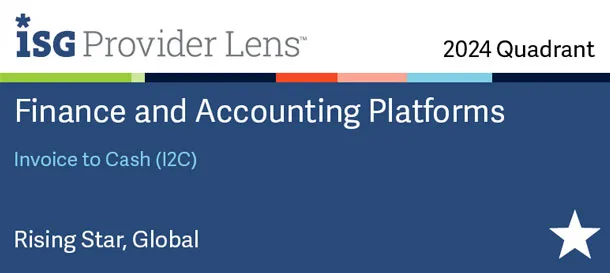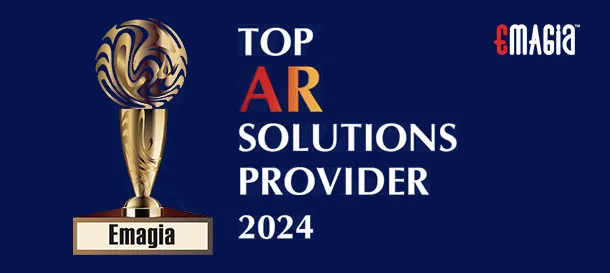Introduction to Bank Reconciliation
In the realm of financial management, maintaining accurate records is paramount. One critical process that ensures the integrity of a company’s financial data is bank reconciliation. This procedure involves comparing a company’s internal financial records with bank statements to identify and rectify any discrepancies. Regular bank reconciliation not only ensures accuracy but also aids in detecting fraud and managing cash flow effectively.
What is Bank Reconciliation?
Bank reconciliation is the process of matching the balances in an entity’s accounting records for a cash account to the corresponding information on a bank statement. The objective is to ascertain the differences between the two and to book changes to the accounting records as appropriate. This process ensures that the company’s recorded bank balance aligns with the actual bank balance, accounting for factors like outstanding checks, deposits in transit, and bank fees.
Importance of Bank Reconciliation
Engaging in regular bank reconciliation offers several benefits:
- Accuracy in Financial Records: Ensures that the company’s financial statements reflect true financial positions.
- Fraud Detection: Identifies unauthorized transactions promptly.
- Cash Flow Management: Provides a clear picture of available funds, aiding in effective cash management.
- Compliance and Audit Preparation: Maintains records that are essential for audits and regulatory compliance.
Steps in the Bank Reconciliation Process
The bank reconciliation process can be broken down into systematic steps:
- Obtain Bank Statements: Gather the latest bank statements for the accounts to be reconciled.
- Access Internal Financial Records: Prepare the company’s cash book or ledger for comparison.
- Compare Deposits: Match deposits recorded in the internal records with those in the bank statement, noting any discrepancies.
- Verify Withdrawals: Ensure that all withdrawals, including checks and electronic payments, are accurately recorded in both records.
- Identify Unrecorded Transactions: Look for transactions present in the bank statement but absent in internal records, such as bank fees or interest earned.
- Adjust for Outstanding Items: Account for outstanding checks and deposits in transit that have not yet cleared the bank.
- Reconcile Balances: After adjustments, the adjusted bank balance should match the company’s adjusted cash balance.
- Document and Review: Document the reconciliation process and have it reviewed by a supervisor or auditor for accuracy.
Common Challenges in Bank Reconciliation
While essential, the bank reconciliation process can present several challenges:
- Timing Differences: Transactions recorded at different times in the bank and company records can cause temporary discrepancies.
- Missing Transactions: Omissions in recording transactions can lead to mismatched balances.
- Errors in Recording: Mistakes such as transposed numbers or duplicate entries can complicate reconciliation.
- Unauthorized Transactions: Fraudulent activities can introduce unexpected discrepancies.
Benefits of Regular Bank Reconciliation
Conducting bank reconciliations on a regular basis offers numerous advantages:
- Enhanced Financial Accuracy: Regular reconciliations ensure that financial statements are accurate and reliable.
- Improved Fraud Detection: Frequent reviews help in the early detection of unauthorized transactions.
- Better Cash Management: Understanding the exact cash position aids in making informed financial decisions.
- Simplified Audits: Accurate and reconciled records streamline the audit process, saving time and resources.
Automation in Bank Reconciliation
To mitigate challenges and enhance efficiency, many organizations are turning to automation:
- Automated Reconciliation Tools: Software solutions can automatically match transactions between internal records and bank statements, reducing manual effort.
- Integration with Financial Systems: These tools often integrate seamlessly with existing accounting software, ensuring real-time updates and accuracy.
- Reduction in Errors: Automation minimizes human errors, leading to more accurate reconciliations.
- Time Efficiency: Automated processes significantly reduce the time required for reconciliation, allowing staff to focus on other critical tasks.
Identifying and Resolving Discrepancies
During reconciliation, discrepancies may arise. Addressing them involves:
- Investigating Differences: Analyze discrepancies to determine their cause, whether it’s a timing issue, recording error, or unauthorized transaction.
- Adjusting Records: Make necessary adjustments in the company’s financial records to reflect accurate balances.
- Communicating with the Bank: If discrepancies stem from bank errors, promptly contact the bank to resolve the issue.
- Implementing Controls: Establish internal controls to prevent future discrepancies, such as regular reviews and segregation of duties.
Frequency of Bank Reconciliation
The regularity of bank reconciliation depends on the organization’s size and transaction volume:
- Small to Medium Enterprises (SMEs): Monthly reconciliations are often sufficient.
- Large Organizations: Due to higher transaction volumes, weekly or even daily reconciliations may be necessary.
- High-Risk Industries: Businesses prone to fraud or with volatile cash flows might require more frequent reconciliations.
Reconciling Multiple Bank Accounts
Organizations with multiple bank accounts face additional complexities:
- Individual Reconciliations: Each bank account should be reconciled separately to ensure accuracy.
- Consolidated Reporting: After individual reconciliations, consolidate the information to provide an overall financial position.
- Consistent Processes: Maintaining a standardized reconciliation process across all accounts ensures consistency and reduces errors. Using automated reconciliation software can streamline the process and provide a consolidated view of multiple accounts.
How Emagia Transforms Bank Reconciliation
Emagia, a leader in AI-powered financial automation, offers cutting-edge solutions to simplify and optimize the bank reconciliation process. With its advanced tools, businesses can benefit from:
- AI-Driven Automation: Emagia automates reconciliation by matching transactions instantly, reducing manual effort.
- Real-Time Data Sync: The platform integrates with banking systems and ERP software to provide real-time updates on financial records.
- Error Detection Fraud Prevention: AI-powered anomaly detection helps identify discrepancies, unauthorized transactions, and potential fraud early.
- Customizable Workflow Automation: Businesses can set rules for reconciliation, automating approvals and escalations when needed.
- Enhanced Reporting Compliance: Emagia generates detailed reconciliation reports, ensuring transparency and regulatory compliance.
By leveraging Emagia’s AI-driven reconciliation solutions, companies can achieve faster, more accurate, and hassle-free bank reconciliations.
Frequently Asked Questions (FAQs)
What is the purpose of bank reconciliation?
Bank reconciliation ensures that a company’s internal financial records match the bank’s records, helping to detect errors, fraud, and unrecorded transactions.
How often should businesses perform bank reconciliation?
Most businesses reconcile their accounts monthly, but companies with high transaction volumes may need to perform reconciliations weekly or daily.
What are the common causes of discrepancies in bank reconciliation?
Discrepancies often arise from outstanding checks, deposits in transit, bank fees, accounting errors, and fraudulent transactions.
How can businesses automate the bank reconciliation process?
Using AI-powered tools like Emagia, businesses can automate transaction matching, detect anomalies, and integrate reconciliation with existing financial systems.
What happens if a company doesn’t reconcile its bank statements?
Failure to reconcile bank statements can lead to financial misstatements, undetected fraud, cash flow problems, and compliance issues.
How do businesses handle missing transactions during reconciliation?
If a transaction appears in the bank statement but not in internal records, businesses must investigate, update their records, and adjust their financial statements accordingly.
What’s the difference between bank reconciliation and cash reconciliation?
Bank reconciliation matches bank statements with company records, while cash reconciliation focuses on verifying cash inflows and outflows, including physical cash transactions.
Conclusion: The Critical Role of Bank Reconciliation
Regular and accurate bank reconciliation is essential for financial stability, fraud prevention, and compliance. By implementing structured processes and leveraging automation tools like Emagia, businesses can streamline reconciliations, reduce errors, and maintain financial transparency. Whether managing a single account or multiple bank accounts, reconciling transactions consistently is key to sound financial management.







